
Biotech company Regeneron (NASDAQ: REGN) reported revenue ahead of Wall Street’s expectations in Q3 CY2025, but sales were flat year on year at $3.75 billion. Its non-GAAP profit of $11.83 per share was 22.7% above analysts’ consensus estimates.
Is now the time to buy Regeneron? Find out by accessing our full research report, it’s free for active Edge members.
Regeneron (REGN) Q3 CY2025 Highlights:
- Revenue: $3.75 billion vs analyst estimates of $3.57 billion (flat year on year, 5.1% beat)
- Adjusted EPS: $11.83 vs analyst estimates of $9.64 (22.7% beat)
- Operating Margin: 27.3%, down from 31.7% in the same quarter last year
- Free Cash Flow Margin: 37.8%, up from 28.2% in the same quarter last year
- Market Capitalization: $60.69 billion
"Regeneron had a solid financial quarter and made progress across our late-stage portfolio by securing new FDA approvals for Libtayo, Evkeeza, and Lynozyfic, receiving positive CHMP opinions for Libtayo and Dupixent, and sharing promising data across our oncology, obesity, allergy, and rare disease portfolios," said Leonard S. Schleifer, M.D., Ph.D., Board co-Chair, President and Chief Executive Officer of Regeneron.
Company Overview
Founded by scientists who wanted to build a company where science could thrive, Regeneron Pharmaceuticals (NASDAQ: REGN) develops and commercializes medicines for serious diseases, with key products treating eye conditions, allergic diseases, cancer, and other disorders.
Revenue Growth
A company’s long-term performance is an indicator of its overall quality. Any business can experience short-term success, but top-performing ones enjoy sustained growth for years. Luckily, Regeneron’s sales grew at a solid 12.4% compounded annual growth rate over the last five years. Its growth beat the average healthcare company and shows its offerings resonate with customers.
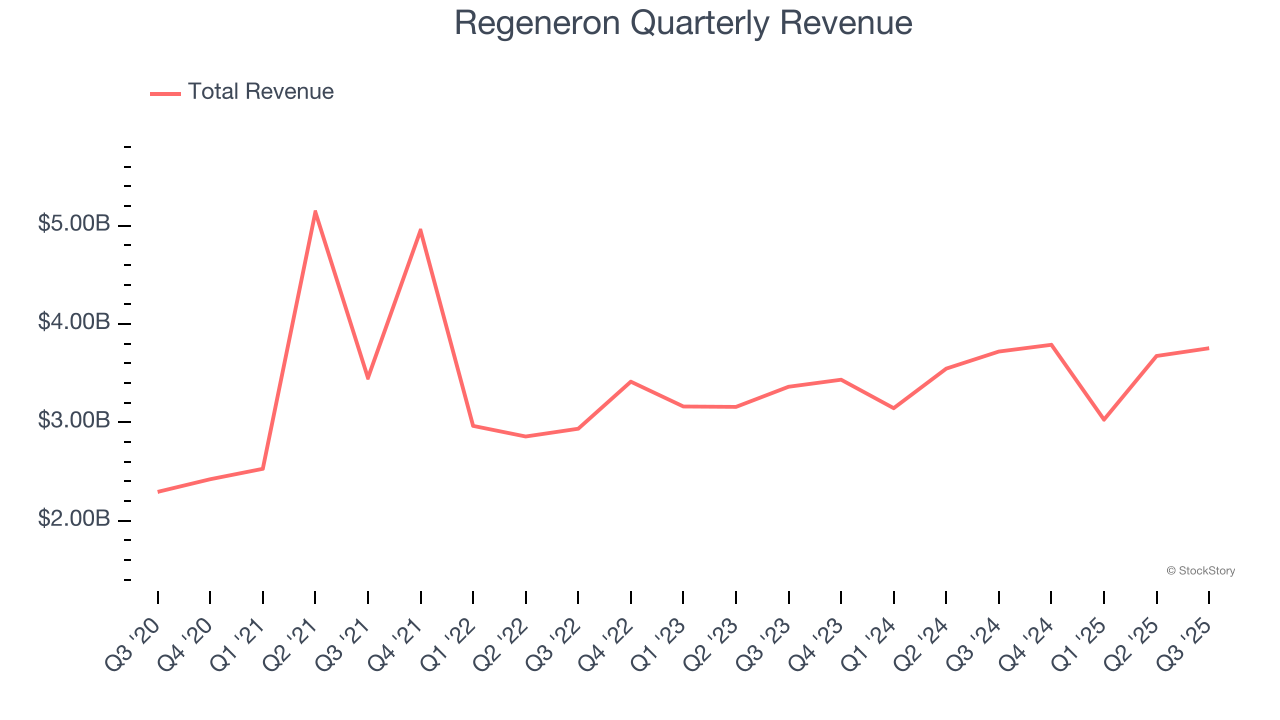
Long-term growth is the most important, but within healthcare, a half-decade historical view may miss new innovations or demand cycles. Regeneron’s recent performance shows its demand has slowed as its annualized revenue growth of 4.3% over the last two years was below its five-year trend. 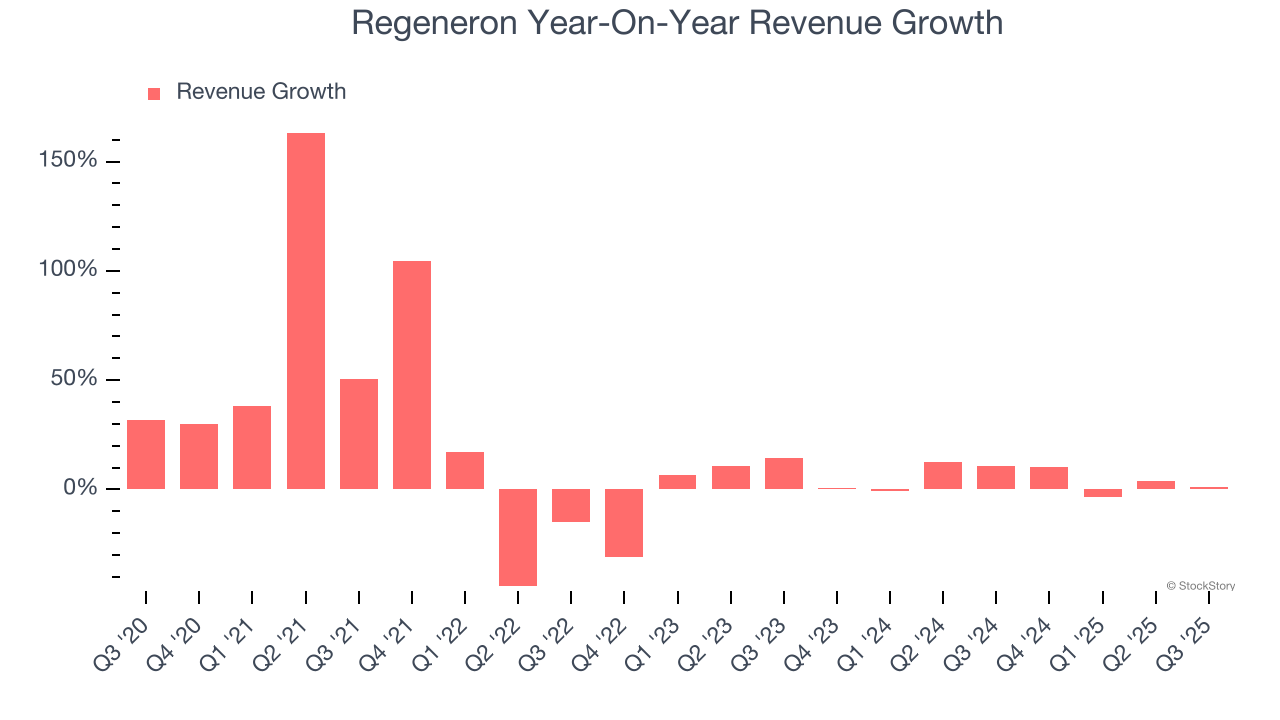
We can better understand the company’s revenue dynamics by analyzing its most important segments, Collaboration and Product & Pipeline, which are 52.4% and 42.3% of revenue. Over the last two years, Regeneron’s Collaboration revenue averaged 11% year-on-year growth. On the other hand, its Product & Pipeline revenue averaged 1.6% declines. 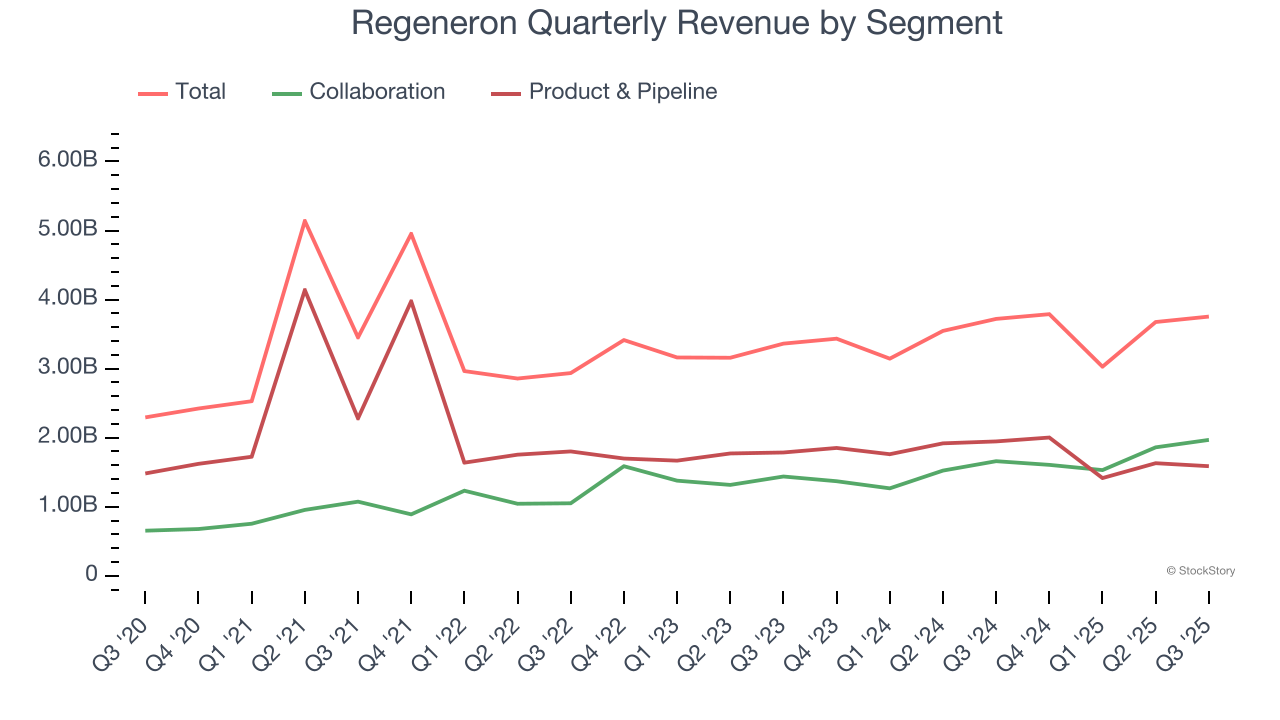
This quarter, Regeneron’s $3.75 billion of revenue was flat year on year but beat Wall Street’s estimates by 5.1%.
Looking ahead, sell-side analysts expect revenue to remain flat over the next 12 months, a deceleration versus the last two years. This projection doesn't excite us and indicates its products and services will see some demand headwinds.
Unless you’ve been living under a rock, it should be obvious by now that generative AI is going to have a huge impact on how large corporations do business. While Nvidia and AMD are trading close to all-time highs, we prefer a lesser-known (but still profitable) stock benefiting from the rise of AI. Click here to access our free report one of our favorites growth stories.
Operating Margin
Regeneron has been a well-oiled machine over the last five years. It demonstrated elite profitability for a healthcare business, boasting an average operating margin of 37.4%.
Analyzing the trend in its profitability, Regeneron’s operating margin decreased by 29.3 percentage points over the last five years. The company’s two-year trajectory also shows it failed to get its profitability back to the peak as its margin fell by 6.3 percentage points. This performance was poor no matter how you look at it - it shows its expenses were rising and it couldn’t pass those costs onto its customers.
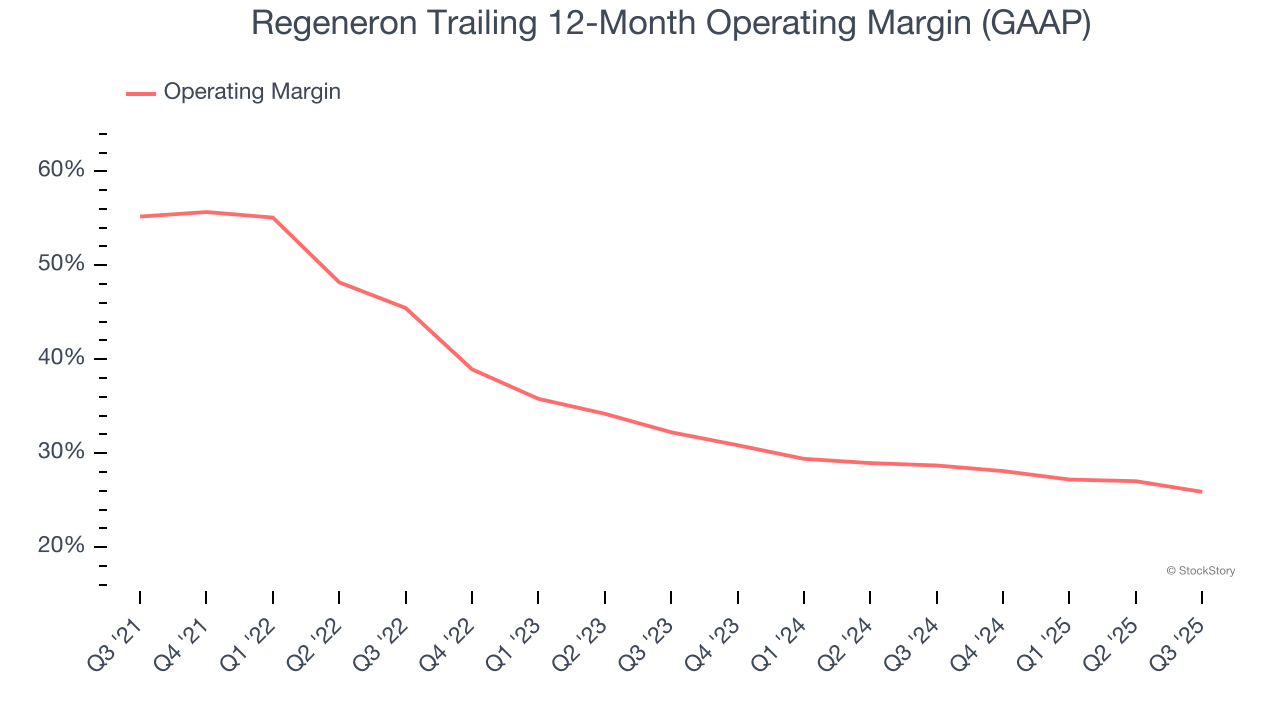
This quarter, Regeneron generated an operating margin profit margin of 27.3%, down 4.4 percentage points year on year. This contraction shows it was less efficient because its expenses increased relative to its revenue.
Earnings Per Share
We track the long-term change in earnings per share (EPS) for the same reason as long-term revenue growth. Compared to revenue, however, EPS highlights whether a company’s growth is profitable.
Regeneron’s EPS grew at a solid 8.7% compounded annual growth rate over the last five years. However, this performance was lower than its 12.4% annualized revenue growth, telling us the company became less profitable on a per-share basis as it expanded due to non-fundamental factors such as interest expenses and taxes.
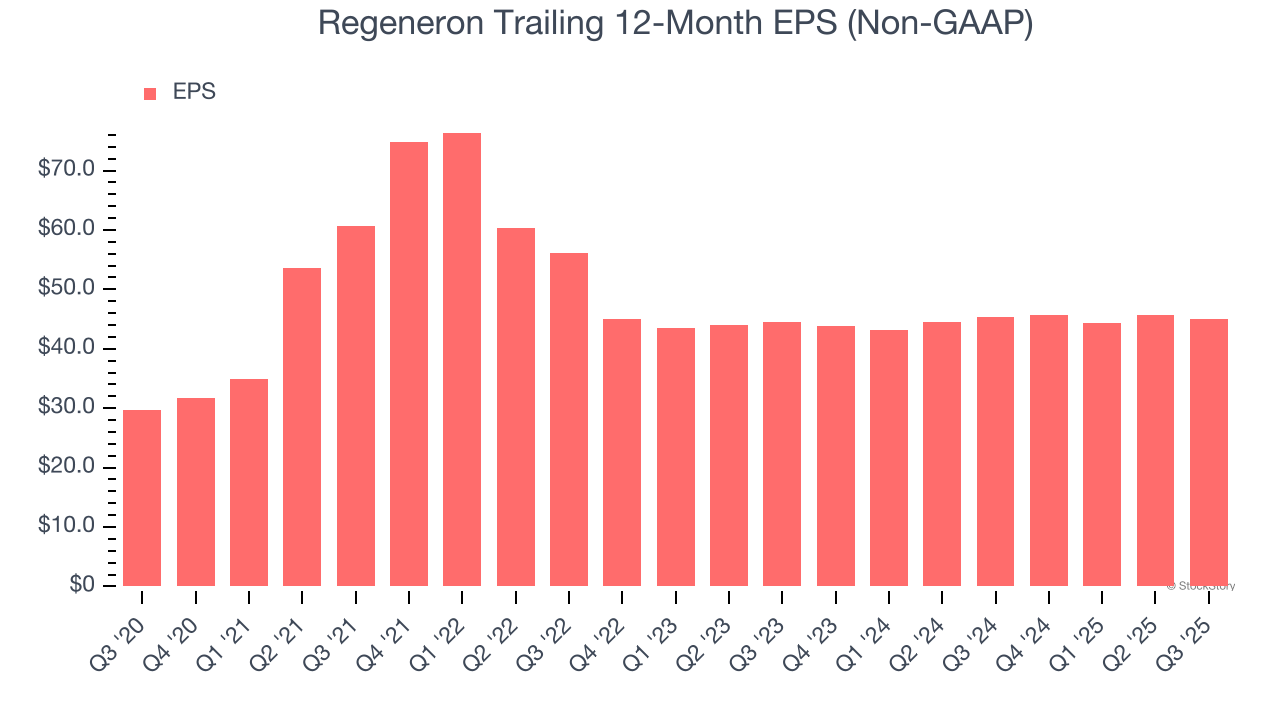
We can take a deeper look into Regeneron’s earnings quality to better understand the drivers of its performance. As we mentioned earlier, Regeneron’s operating margin declined by 29.3 percentage points over the last five years. This was the most relevant factor (aside from the revenue impact) behind its lower earnings; interest expenses and taxes can also affect EPS but don’t tell us as much about a company’s fundamentals.
In Q3, Regeneron reported adjusted EPS of $11.83, down from $12.46 in the same quarter last year. Despite falling year on year, this print easily cleared analysts’ estimates. Over the next 12 months, Wall Street expects Regeneron’s full-year EPS of $45.01 to shrink by 10.2%.
Key Takeaways from Regeneron’s Q3 Results
We were impressed by how significantly Regeneron blew past analysts’ revenue expectations this quarter. We were also glad its EPS outperformed Wall Street’s estimates. Zooming out, we think this was a solid print. The stock traded up 4.5% to $611 immediately following the results.
Regeneron had an encouraging quarter, but one earnings result doesn’t necessarily make the stock a buy. Let’s see if this is a good investment. We think that the latest quarter is only one piece of the longer-term business quality puzzle. Quality, when combined with valuation, can help determine if the stock is a buy. We cover that in our actionable full research report which you can read here, it’s free for active Edge members.





